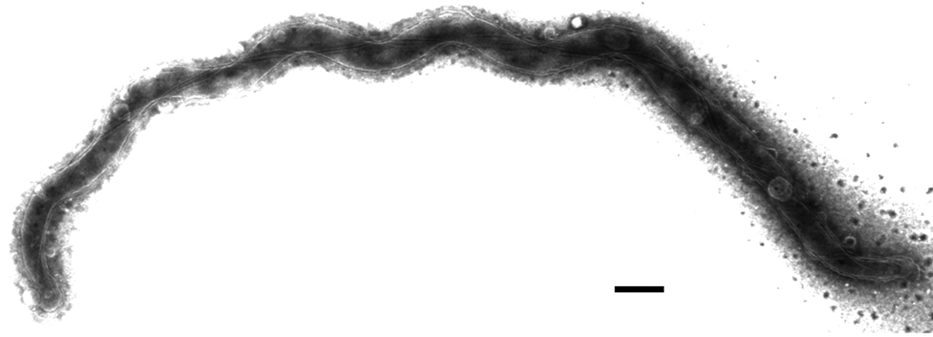The aetiology of BDD
We know that BDD a bacterial disease and the very earliest microscopic examinations of these lesions revealed the presence of high numbers of spiral-shaped organisms, known as spirochetes, within diseased tissue.
Since then, a large body of evidence has accumulated to implicate the involvement a particular genus of bacteria, known as Treponema, in the aetiology of BDD. Our research has led to the identification of three distinct taxonomic groups (phylogroups) belonging to this genus, which may be present either individually or in combination, within BDD lesions: Treponema medium, Treponema phagedenis and Treponema pedis.
Presently, we do not know whether other (as yet undefined) bacteria play some role in the aetiology of BDD. However, because these three treponemal species have been consistently isolated from BDD lesions and are found in very high numbers at the interface between healthy and diseased tissue, they are likely to play an essential role in disease initiation, persistence and transmission.
Electron micrographs of negatively stained BDD-associated Treponema cells


BDD-associated treponemes are usually anaerobic (will grow only in the absense of oxygen) and fastidious (dependent on the presence of specific nutrients in growth medium). They are Gram-stain negative and helically coiled.